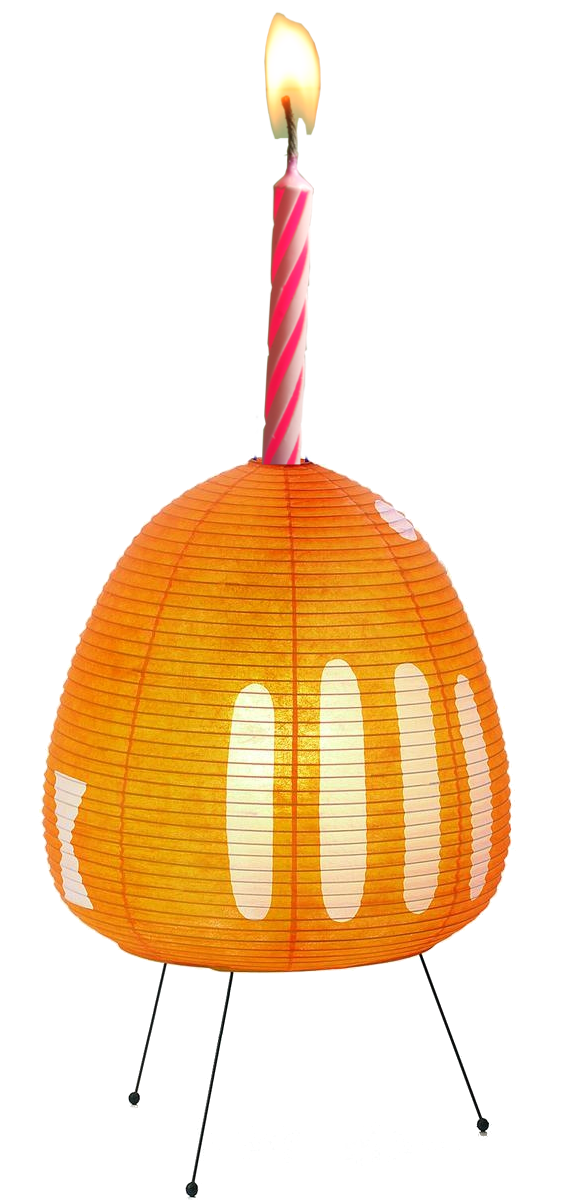Whereas the vast majority of successful and popular furniture designers have an architecture or handcraft background, there are naturally exceptions. One of the best known and most fascinating being without question the sculptor and artist Isamu Noguchi.
Born on November 17th 1904 in Los Angeles as the first and only child of the American writer Leonie Gilmour and the Japanese poet Yone Noguchi, the young Isamu was raised in Japan until 1918 when he was sent to the Interlaken boarding school in Rolling Prairie, Indiana.
Following his gradation from high school in 1922 Isamu Noguchi began studying medicine at Columbia University; however, having become fascinated, if not infatuated, by and with sculpture and art in general, he quit his medical studies in 1924 to devote himself fully to sculpture. In 1927 Isamu Noguchi was awarded a John Simon Guggenheim Fellowship which he used to pay for a flight to Paris to seek an apprenticeship with the Romanian born sculptor Constantin Brâncuși, one of the leading protagonists of modernist sculpture. Legend has it that on arriving at Brâncuși's studio Noguchi was informed by Brâncuși that he had neither need for nor interest in an apprentice. Undeterred Isamu Noguchi proposed that Brâncuși may not need an apprentice, but probably needed a stone cutter.
He did.
And so Isamu Noguchi spent the next six months working with and learning from Constantin Brâncuși. Following his return to New York in 1929 Isamu Noguchi met two further individuals who would have a decisive influence on his future career: the architect Richard Buckminster Fuller who installed and nurtured in Isamu Noguchi a passion for new technologies, new materials and the glorious utopia winging its way towards us, and the choreographer Martha Graham for whom Noguchi would develop numerous stage design concepts and through whom Noguchi was able to develop his passion for abstract, avant garde art and to expand that passion into the worlds of music, theatre and dance. All three relationships and the associated experiences helping form the complex, universal, thoroughly unique, artist Isamu Noguchi.
The 1930s saw Isamu Noguchi travel extensively, including an emotionally fraught return trip to Japan, as well as realising numerous stage design, sculpture, art and landscape design projects in the USA and Mexico. Then on December 7th 1941 Japan attacked the US Navy at Pearl Harbour; for Isamu Noguchi "an unmitigated shock, forcing into the background all artistic activities"
Following Pearl Harbour all Japanese citizens, and Americans of Japanese descent, living in California were placed in internment camps. As a resident of New York Isamu Noguchi was not obliged to enter such a camp, however voluntarily entered one on Indian territory in Poston Arizona with the intention of helping develop creative and artistic programmes. The reality in the camp not matching the promises made Isamu Noguchi sought permission to leave, and after seven months internment was released on a temporary licence.
Post-war, in addition to sculpture projects, Isamu Noguchi completed numerous important public landscape architecture projects including the Sunken Garden for the Chase Manhattan Bank Plaza in New York, the Kodomo no Kuni children's playground in Yokohama, and the Peace Bridge in Hiroshima. And increased his creative repertoire to include furniture design and lighting design; his most famous works being without question his Coffee Table for Herman Miller, his Rocking Stools for Knoll and above all his Akari light sculpture family.
Despite the success of his furniture and the popular fame they brought him Isamu Noguchi always considered himself a sculptor and all his furniture works retained a sculptural origin, a sculptural basis and were created according to Isamu Noguchi's understanding of sculpture and art. The concept of the industrial designer working to a brief devised by a company being wholly foreign to Isamu Noguchi, or as he himself phrased it, "I was not interested in, however - or should I say not capable of - designing anything for manufacture à la mode."
Thankfully. We would add.
Isamu Noguchi died on December 20th 1988 in New York aged 84, and is survived today by one of the most diverse, intense and challenging creative legacies of the 20th century.
Happy Birthday Isamu Noguchi!
